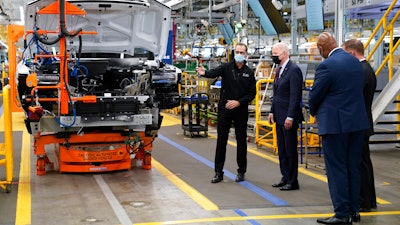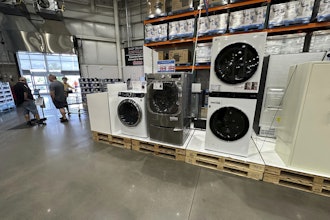
WASHINGTON (AP) — U.S. industrial production increased 0.5% in November as output at the nation's factories reached the highest level since January 2019.
The November gain followed an even larger 1.7% increase in October, a rebound from a 1% decline in September, the Federal Reserve reported Thursday.
There were severe supply chain problems afflicting manufacturers in September that reduced output at U.S. auto plants, on top of the adverse effects from refinery shutdowns along the Gulf Coast because of Hurricane Ida.
For November, manufacturing output rose 0.7%, led by an ongoing rebound in the auto sector, where output rose 2.2% following a 10.1% surge in October. Even with the gains, production from auto plants is 5.4% below the level of a year ago as manufacturers continue to deal with supply chain issues, particularly a shortage of computer chips.
The aerospace sector also put on strong numbers with a gain of 1.6%. In nondurable manufacturing, gains were seen in textiles, paper and plastics production.
Industrial production covers manufacturing, mining and utilities. For November, the mining sector, which includes oil and gas production, rose 0.7% after a 4.3% surge in October which reflected the re-opening of production along the Gulf Coast following Hurricane Ida.
Utility production was down 0.8%, the second decline in the past three months.
Economist believe that the industrial sector will continue to struggle to meet strong demand with the problems afflicting the supply chain still a ways off. Another big threat is another wave of COVID-19 with the arrival of the omicron variant.
Spiraling infections in Britain driven in part by the new omicron variant of the coronavirus rattled Europe on Thursday, and cases are rising in the U.S.
“Factories will work hard to meet ebullient demand, but they'll be constrained by transportation bottlenecks, input shortages, high prices and hiring difficulties,” said Oren Klachkin, lead U.S. economist at Oxford Economics.






















